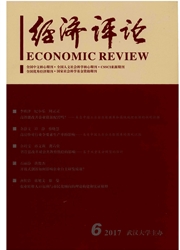

 中文摘要:
中文摘要:
全球价值链分工背景下,国际分工的层次逐渐从产品深入到生产环节。由于存在严重的重复计算问题,以商品总值为统计口径的传统贸易统计已无法客观反映国际贸易的真实情况。以价值增值为统计口径的附加值贸易统计框架为分析新型国际分工体系下国际贸易问题提供了全新的视角。本文通过全面梳理附加值贸易统计的思路和测度方法,从假设条件的差异出发,重点分析了该方法与垂直专业化的联系与区别,揭示了垂直专业化指标在全球价值链分工体系下的不足,表明附加值贸易统计的先进性及其在国际生产分割背景下分析贸易相关问题的重要意义,并对其政策内涵和应用前景进行评述和展望。
 英文摘要:
英文摘要:
Under the background of global value chain, the level of international labor division has gradually transferred from product to production phase. Because of the serious problem of "double counting" ,the traditional trade statistic system which is in terms of gross value,can no longer be able to reflect the reality of international trade While the measures of trade in value - added,which is in terms of added value, give us a whole new alternative perspective. In the progress of illustrating the frameworks and methods, the paper analyzes the linkages and differences between trade in value - added and vertical specialization. The paper makes clear the advantages and significance of trade in value - added as well as the inefficiency of vertical specialization measurement in the new system of international labor division. The paper also demonstrates the policy implications and the promising future application of trade in value - added.
 同期刊论文项目
同期刊论文项目
 同项目期刊论文
同项目期刊论文
 期刊信息
期刊信息
